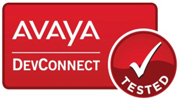Dialogic IMG 2020 Integrated Media Gateway
Integrated gateway solutions to enable connections between networks, services and subscribers with ease and scale
![]()
Click here to jump to more pricing!
Overview:
The Dialogic IMG 2020 Integrated Media Gateway connects and secures sessions across IP and mixed network boundaries to support the seamless delivery of services. The IMG 2020 connects IP and hybrid networks via high-density optical, telephony and Ethernet links in a compact 1U form factor appliance. It also transforms media and signaling to support efficient and reliable voice, fax and multimedia sessions for mobile, fixed and cloud-based applications.
The combination of IP multimedia and Time Division Multiplexing (TDM) gateway functionality in a single chassis in the IMG 2020 offers the potential for significant reductions in CAPEX and OPEX when compared to less integrated alternatives.
Along with providing a broad range of session performance scalability in a small footprint, the IMG 2020 handles signaling and media in a single chassis and can deliver SIP services into SS7, SIGTRAN, PRI, and SIP-I networks. The IMG 2020 also provides basic IP session control and security features to help service providers deliver multimedia services with features that include Denial of Service (DOS) protection, IPv6 to IPv4 interworking, SIP mediation, SIP-to-H.323 interworking, SIP back-to-back user agent (B2BUA), SIP trunking support, and IP-to-IP transcoding of voice, mobile HD voice, fax and tones.
The IMG 2020 is part of a line of gateway solutions from Dialogic that help service providers and enterprises energize their networks and services with a better way to interconnect and deliver services through ease-of-use and low total cost of ownership (TCO).
 High Density and Versatility
High Density and Versatility
With its high density and versatility, the IMG 2020 can help wireless and wireline service providers add new Value-Added Services (VAS) quickly, and provide a clear migration path to an all-IP network. The IMG 2020 is also an excellent option for retail, wholesale, and enhanced service VoIP deployments, as well as contact centers and mobile VAS.
The IMG 2020 also offers energy efficiency and hardware components where hazardous substances have been minimized, which can help operators and contact centers seeking to fulfill "green" initiatives.
Any-to-Any Signaling and Media Connectivity
The IMG 2020 provides any-to-any network connectivity through its ability to interwork multiple protocols used by telecommunications providers to deliver services to their retail, business and wholesale customers. In addition to providing TDM-to-TDM signaling conversion (SS7 ISUP and ISDN), it can also provide interworking between SS7, SIGTRAN, SIP, H,323 and SIP-T/I formats.
The IMG 2020 also supports any-to-any media transcoding for popular voice and HD voice codecs. T.38 and G.711 fax interworking and support for RTP, in-band and SIP INFO method based tones and event handling complement the media transcoding capabilities to provide a high degree of flexibility to help deliver value added services economically.
Easy-to-use Service Configuration and Management Tools
The Web graphical user interface (WebUI) is a real-time web based GUI used to configure, monitor, and provision the IMG 2020. It allows operators to graphically configure and perform real-time monitoring and provisioning of a single IMG 2020. Configuration changes can be applied to connected nodes with simple point-and-click actions, and high level alarms can be viewed without the need to reference or decode log files. SNMP support includes both standard and private MIBs, enabling customers to integrate statistics into their existing management systems, for example:
- Performance intelligence such as call reporting by channel group
- CPU and memory utilization
- Alarms
Powerful SIP profiling tools on the IMG 2020 allow operators to configure attributes and features needed to communicate with specific external network components and IP endpoints. This allows the IMG 2020 to easily mediate SIP signaling variants between networks that use different types of SIP headers to convey message attributes. The IMG 2020 also features the Dialogic Programmable Protocol Language (PPL), which allows rapid implementation of SS7 ISUP variants and other signaling changes.